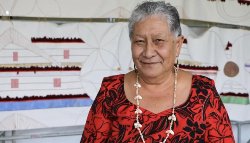Looking For A Partner On The Quiet
A South Auckland company is quietly promoting the success of Kiwi innovation as it seeks a partner to mass-produce its digital processor that cancels out noise with . . . noise.
Earlier in the year, Digital Technologies Ltd announced it was working on an "active noise controller". Now, after more than two years of development, a prototype has been proved to work and is ready for production.
The product has huge worldwide potential for use not only by the general public, but also in the aviation industry, on the industrial shop floor and the military. It is the brainchild of aviation consultant Norman Taylor of Digital Technologies, and his business partner, Mark Donaldson. The development work was done with the help of Technology New Zealand investment.
Mr Donaldson originally worked on the
project as a Master of Engineering student funded by
Technology New Zealand's Graduates in Industry
Fellowships.
Simply put, the "active noise controller"
produces noise to cancel out noise. "But it is half a
wavelength behind, at the same volume and frequency, so it
cancels out the original," Mr Taylor says.
He says his
company has received several inquiries about the controller
from around the world and a partner is likely to be an
overseas company.
"We're going to need help to produce
this in commercial quantities. There certainly isn't the
capacity in New Zealand to produce the computer chips that
are required, in any great quantity."
Giving an example of
how it works, he says: "Imagine you're in an aeroplane and
watching the video, and you're trying to follow the sound
track through your head-set. You can't hear the movie very
well because there's too much noise around you. A microphone
inside the head-set picks up that same noise, reproduces it,
but delayed, which cancels it out, so you can hear the
movie."
He says the processor has the potential to fit
into a matchbox. "For example, in an aircraft it would be in
the seat arm-rest or in the lead to the head-set."
Or it
could be in a computer chip in a head-set. Mr Taylor says
the device could lead to workers wearing lighter head-sets.
"For example, you wouldn't have to wear such heavy ear protection to drown out the noise of your Kango hammer. Or it could mean lighter ear protection for workers in noisy factories."
He says the device could be inserted into the
head-sets worn by tank crews or those worn by pilots. "The
flight-deck of a Boeing 747 is not particularly noisy – you
can have a conversation in reasonable tones there. But
smaller aircraft generate a lot of noise, so lighter
head-sets would be an advantage."
He says Technology New
Zealand's investment in the project was essential to its
success. "We had nothing to begin with. The project was
high-risk and Technology New Zealand gave us the helping
hand we needed to make it
work."
-ends-


 Braden Currie: Sets Sights On The Ironman North American Championships In Texas
Braden Currie: Sets Sights On The Ironman North American Championships In Texas Whanganui Regional Museum: Historic Wedding Dress Unveiled, A Piece Of Marton’s Heritage
Whanganui Regional Museum: Historic Wedding Dress Unveiled, A Piece Of Marton’s Heritage Donovan Ryan: Local Runner Takes Out Frontrunner Christchurch Marathon
Donovan Ryan: Local Runner Takes Out Frontrunner Christchurch Marathon University of Auckland: Tributes Flow For Much Loved Pacific Leader Melegalenu’u Ah Sam
University of Auckland: Tributes Flow For Much Loved Pacific Leader Melegalenu’u Ah Sam NZEI: Ministry Of Education Cuts Will Disproportionately Affect Pasifika
NZEI: Ministry Of Education Cuts Will Disproportionately Affect Pasifika Day One Hapai te Haeata: Call To Action For Young Filmmakers Against The Backdrop Of Funding Cuts
Day One Hapai te Haeata: Call To Action For Young Filmmakers Against The Backdrop Of Funding Cuts